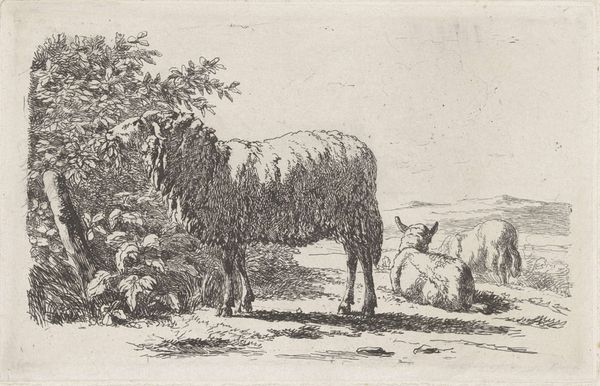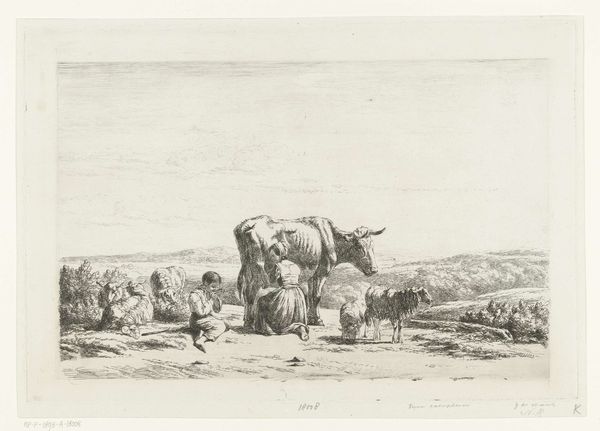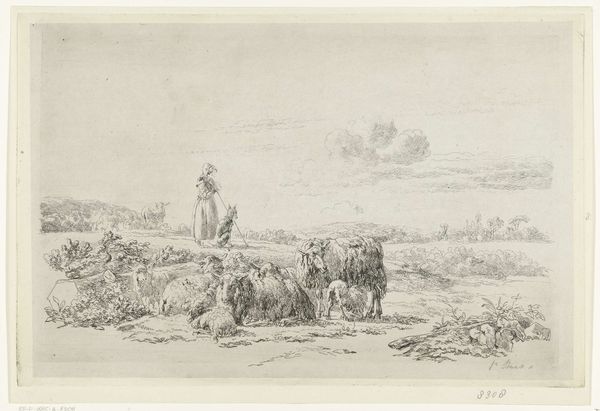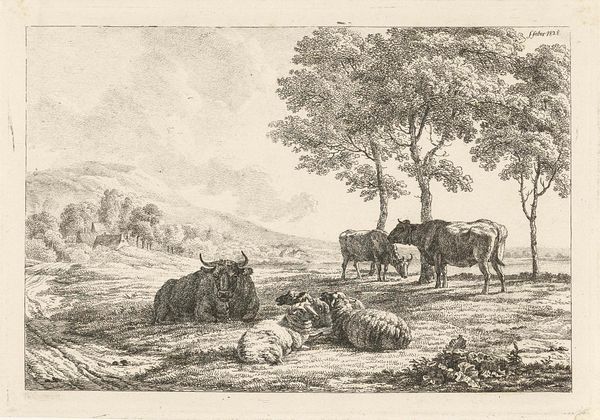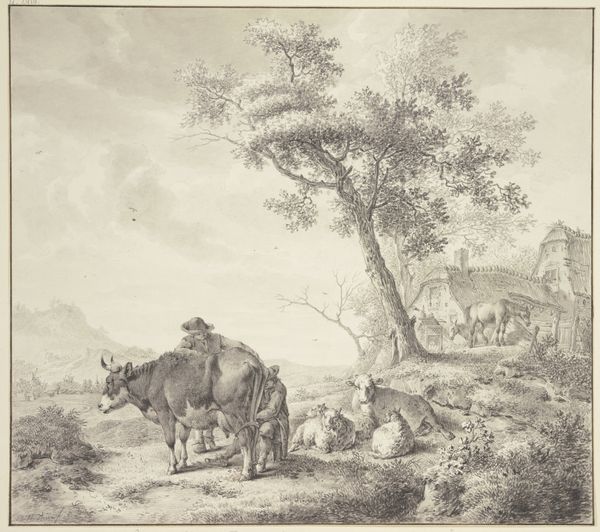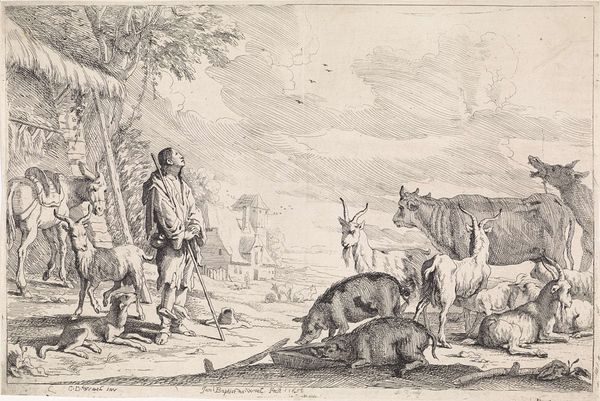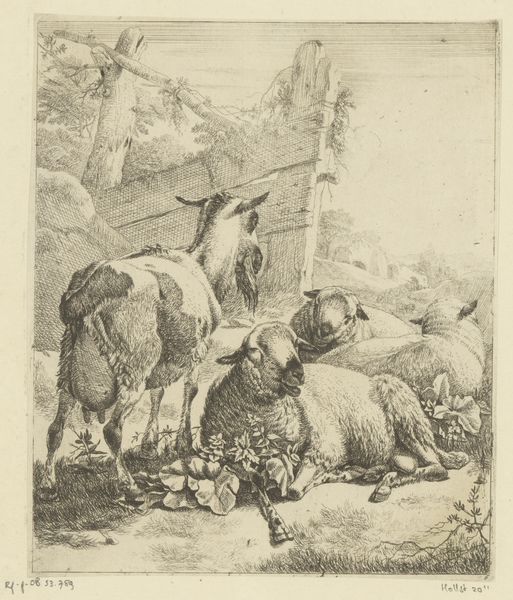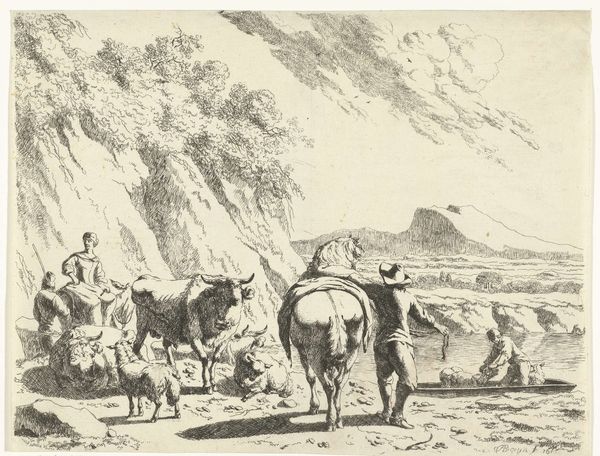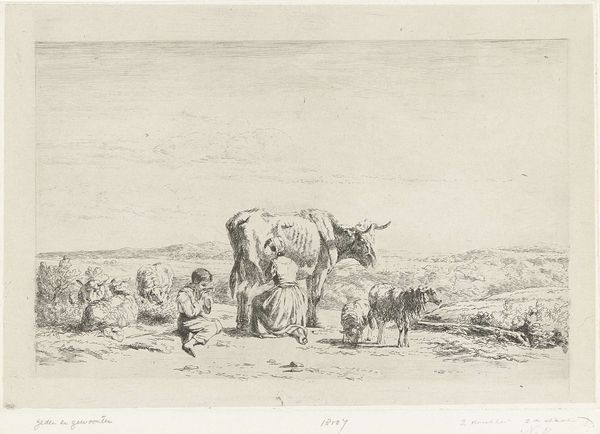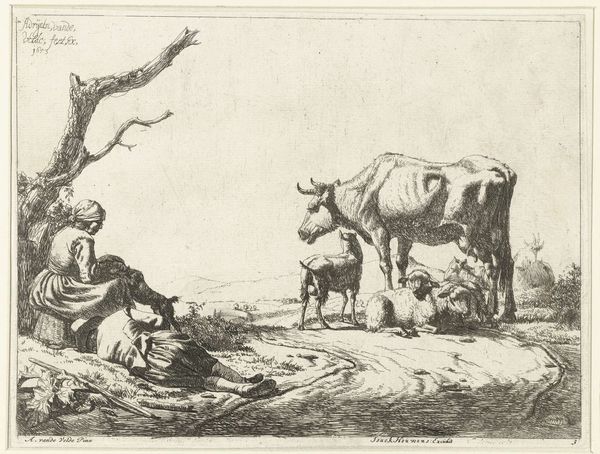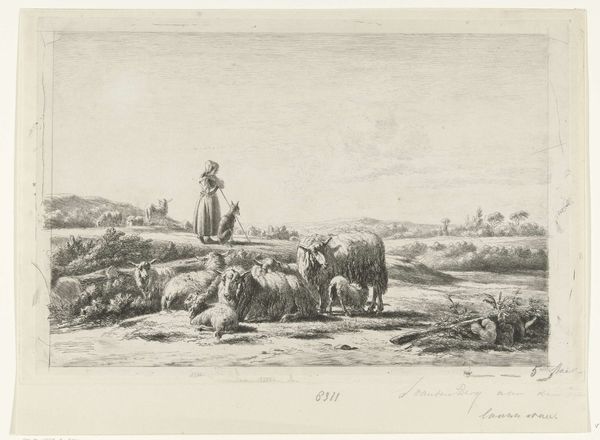
drawing, pencil
#
drawing
#
landscape
#
pencil drawing
#
pencil
#
genre-painting
#
realism
Dimensions: height 177 mm, width 273 mm
Copyright: Rijks Museum: Open Domain
Editor: So this pencil drawing by Simon van den Berg, called "Herder en Schapen" – or "Shepherd and Sheep" – dates from sometime between 1822 and 1891. It's a peaceful pastoral scene. I find myself wondering about the child’s connection to the flock. How do you interpret this work? Curator: Immediately, I'm drawn to the boy. Notice his stillness amidst the flock, his symbolic role as protector… perhaps even a Christ-like figure tending his flock. Sheep, throughout art history, appear as symbols of innocence, purity, and are connected to the idea of sacrifice, so the quiet relationship portrayed may offer a reflection on themes of responsibility, vulnerability, and perhaps a gentle commentary on rural life. Does it evoke similar sentiments for you? Editor: Definitely a sense of peace, and the boy seems so young for such responsibility. Do you think the artist intended that contrast? Curator: It’s possible. Genre painting, especially, offers a mirror to contemporary life, imbuing everyday scenes with deeper meaning. Van den Berg might have wanted to portray a shared history, a collective cultural memory linking childhood with nature, dependence with guidance, posing questions about tradition, even… What do you take from the landscape itself? Editor: The landscape seems secondary, a simple backdrop…almost timeless, I suppose. Curator: Yes, and that simplicity lends it power! It suggests a continuous cycle, a pastoral ideal echoing through centuries of art. It asks us to consider: what continuities are *we* a part of? Editor: It’s fascinating how much depth can be found in what initially seemed like a simple scene! I'll certainly look at similar artworks in a different way from now on.
Comments
No comments
Be the first to comment and join the conversation on the ultimate creative platform.
